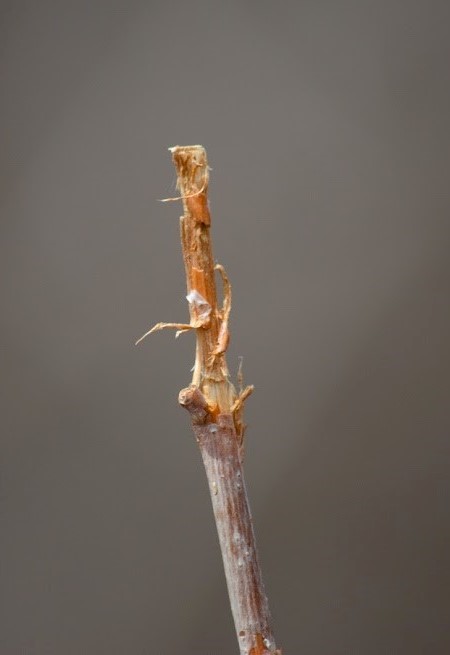
White-tailed deer (Odocoileus virginianus) are perhaps the best known species of big game wildlife, especially in the state of Wisconsin. They are a native species and therefore belong on the landscape. In addition, they have intrinsic value, such as providing a host of ecosystem services (seed dispersers), and being a valuable part of the food chain in terms of prey for predators. Aside from these benefits, their extrinsic values are also numerous, for example, people get immense enjoyment from feeding, seeing, photographing, and painting pictures of deer, especially mature bucks with a full set of antlers. Undoubtedly however what gets many the most excited is the opportunity to harvest a deer for the meat and taxidermy mount, plus the stories that go with each deer season. And accompanying deer harvest is a very generous boost to the state’s economy. According to the Wisconsin Department of Natural Resources (WDNR), hunting generates $2.5 billion dollars annually from hunting license sales, purchase of hunting gear, and food, fuel, and lodging/trip expenses to access hunting areas; in addition to jobs directly and indirectly associated with hunting. Eighty-eight percent of the $2.5 billion total each year comes from the 9-day deer gun season, according to the WDNR.

Despite all of the benefits associated with white-tailed deer, negative consequences result from deer on the landscape. Deer can create problems, for example, for nursery and Christmas tree growers and arborists, primarily through browsing activity and during the mating season when they tend to rub woody vegetation with their antlers. Being herbivores deer eat a wide variety of plant and woody vegetation. Having permanently lost the incisors (front teeth) on their upper jaw, deer pinch vegetation between the incisors on their bottom jaw and the incisor-free upper jaw as they chew and pull on the plant material, leaving a square or ragged break where the browse occurs. Male deer (bucks) grow antlers, beginning in late spring each year. Antler growth is regulated by increasing hormone levels (mostly testosterone) in the male’s body, and hormone levels are regulated by increasing day length in the spring and decreasing day length in the fall. By end of each summer, antler growth is nearly complete. Most antler damage to woody vegetation occurs in the fall when bucks rub trees to remove velvet (hair-like material) from their antlers and to scent-mark their territory. Buck rubs can be seen between ground level and about 3-4 feet above ground level; tend to occur most commonly on smaller diameter trees; and have the appearance of the outer bark being shredded or removed, exposing the inner bark. Buck rubs can be unsightly, especially on trees for sale, but also expose the tree to insect and disease damage.
There are a range of management options to reduce or eliminate deer damage, but it is most effective to choose the best practice based on the specific situation and location. Where possible the most cost-efficient management option for deer damage is almost always to harvest deer to reduce the local population, thereby potentially reducing the amount of damage. If you’re able to harvest deer on your property, a number of deer seasons occur throughout the fall and into early winter. It is important to understand the buck to doe ratio in your area; for example, if there are four does (or antlerless deer) for every buck, you should harvest at least four does for every buck harvested on your property in order to at least stabilize the growth of the deer population. Harvesting five or six does for every buck would help to decrease the deer population on your property. In addition, you may be eligible for deer depredation permits depending on your location and the types of agricultural crops (including trees) you grow. Depredation permits allow you to harvest deer outside of defined deer seasons. Check with your county biologist with the WDNR to see if you’re eligible for depredation permits.
Outside of the lethal option of harvesting deer, a number of non-lethal management practices also exist. The most effective non-lethal option to protect trees from both browse and rub damage is some type of fencing to prevent deer from accessing the plant material. Fencing may be relatively inexpensive and temporary, like electric fencing, or more permanent (up to 30 years) and relatively expensive like 8-foot tall, high-tensile woven wire fencing. Electric or high-tensile fencing can be used to exclude deer from a relatively large area; in addition to fencing off large areas, individual trees may be protected using tree guards. Tree guards can be purchased commercially or made from a variety of materials, including screen, chicken wire, or chain link fence, among other materials.

Management practices other than fencing, like repellents and an assortment of harassment measures may be effective, depending on the situation. However, these type of management options tend to be relatively short-term in their effectiveness, can be relatively expensive, and labor intensive.
Lastly, you may be eligible for the Wisconsin Wildlife Damage Abatement and Claims Program (WDACP), a state program that cost-shares non-lethal management practices like deer fencing and financially compensates the land owner for deer damage. Check with your county biologist with the WDNR to see if you’re eligible for the WDACP.
Article by: David Drake, Extension Wildlife Specialist / Professor, Dept. of Forest and Wildlife Ecology, University of Wisconsin-Madison







